Serie - Homecoming : Be ready to discover one of the 2018 best series
Par Mulder, 02 novembre 2018
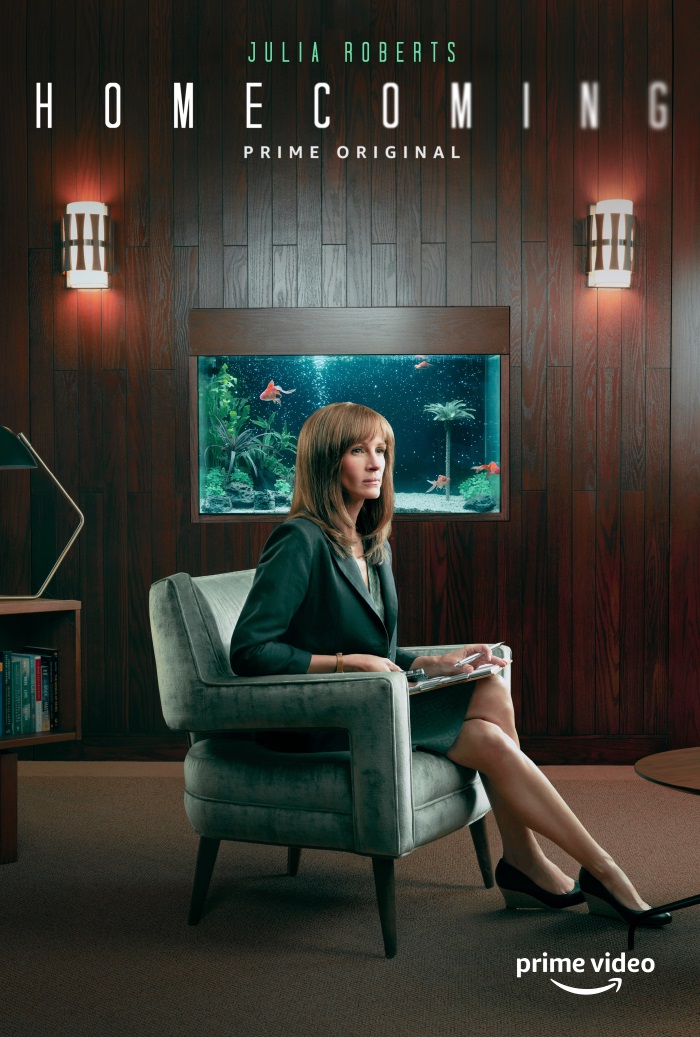
From director Sam Esmail, the visionary creator of Mr. Robot, and the creators of Gimlet Media’s critically-acclaimed podcast Homecoming, Eli Horowitz and Micah Bloomberg, comes television’s latest genre-defying psychological thriller.Homecoming features Oscar-winning actress Julia Roberts (Erin Brockovich) in her first starring role in television as Heidi Bergman, a caseworker at the Homecoming Transitional Support Center, a facility that helps soldiers returning home from war. She develops a complex relationship with a young veteran eager to rejoin civilian life named Walter Cruz, played by breakout newcomer Stephan James. Emmy-winner Bobby Cannavale (Boardwalk Empire) appears as Bergman’s erratic offsite supervisor Colin Belfast, with Alex Karpovsky (HBO’s Girls) as the facility’s life-skills coach, Craig. Oscar-nominated actress Marianne Jean-Baptiste (Secrets & Lies) plays Walter’s mother Gloria, while Jeremy Allen White and Dermot Mulroney (both of Showtime’s Shameless) fill out the cast as Heidi’s ex-boyfriend and a fellow Homecoming veteran, respectively.
This narrative alternates with another, taking place four years later, when we find Heidi in a new life as a small-town waitress living with her mother, portrayed by Oscar-winner Sissy Spacek (Coal Miner’s Daughter). When a Department of Defense auditor, Boardwalk Empire’s Shea Whigham, questions her about her departure from the Homecoming facility, Heidi begins to question the narrative — and reality — she has spun for herself. Each of Homecoming’s ten half-hour episodes were directed by Esmail and written by podcast creators Horowitz and Bloomberg, along with David Weiner, Cami Delavigne, Shannon Houston, and Eric Simonson. The series is produced by Esmail via his overall deal at Universal Cable Productions (UCP) through his production company Esmail Corp; as well as Mr. Robot executive producer Chad Hamilton of Anonymous Content; the podcast’s Horowitz and Bloomberg; and Chris Giliberti, Alex Blumberg, and Matt Lieber of Gimlet Media. Roberts serves as executive producer through her production company Red Om Films; her partners Lisa Gillan and Marisa Yeres Gill are co-executive producers.
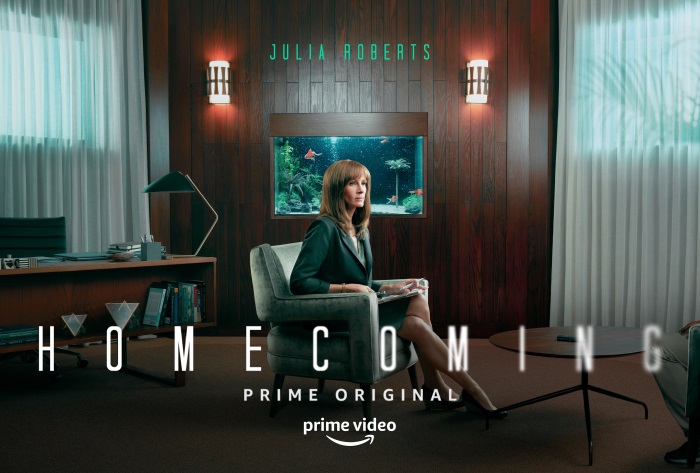
In creating Homecoming’s unsettling visual style and tone, Esmail reunited the crew from the Emmy and Golden Globe Award-winning Mr. Robot, which recently aired its critically acclaimed third season on USA Network. Among Esmail’s key collaborators on Homecoming are Emmy Award-nominated Director of Photography Tod Campbell, Art Directors Guild Award-winning Production Designer Anastasia Stasia” White, and Emmy-nominated Costume Designer Catherine Marie Thomas. Co-produced with Universal Cable Productions (UCP), Amazon Studios secured global rights to Homecoming, which received a two-season straight to series order and premieres exclusively on Prime Video on November 2, 2018.
Homecoming’s journey to the screen began without any consideration of a screen at all. We actually had no idea what it was going be,” says Horowitz, a novelist and editor who in 2016 was charged with creating narrative content for the online podcast network Gimlet Studios. All I knew was that we were going to make an audio series and it was going to have episodes.” The project was to be Horowitz’s first stab at a podcast, and his first-ever scripted effort as a writer. Just as a listener, I knew that podcasts can create a weirdly intimate relationship with the voice in your ear,” he says. It sucks you in in a way that almost no other medium can. I wanted to create a fictional piece that had that kind of immediacy and authenticity.” Horowitz knew he needed a collaborator. Enter veteran sound mixer Micah Bloomberg (All is Lost, Christine, Obvious Child), who was referred to him by a mutual friend. We talked on the phone for like 90 minutes and kicked around some story ideas,” says Bloomberg. He called me back the next week and that was the genesis of our working together. We started with five different podcast ideas, and one of those was for Homecoming.” The two agreed early on about what they didn’t want in their podcast: neither narration nor dramatic musical cues. We just wanted people talking — almost like a found document,” says Horowitz.
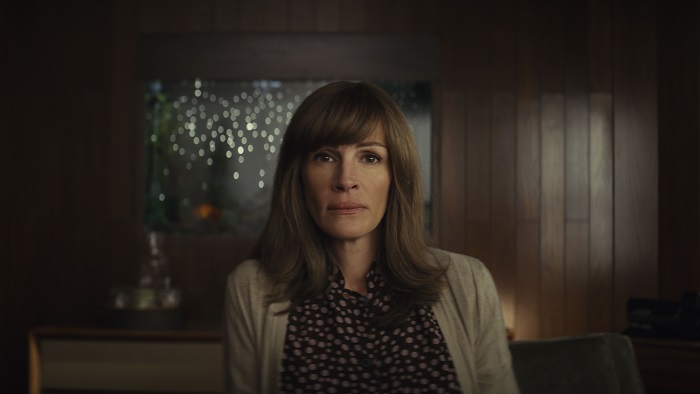
My background is in TV and film, but also in playwriting,” says Bloomberg. Often when you write a movie, you’re thinking in visual terms. This was an opportunity to tell a story through language, and through what characters weren’t saying. I was really excited about that.” With acclaimed actors Catherine Keener, Oscar Isaac and David Schwimmer playing Heidi, Walter and Colin respectively, Homecoming debuted on Gimlet Studios on November 16, 2016. Fan response was immediately robust. I remember looking on Twitter,” says Bloomberg, and people really wanted to know what had happened to Heidi between the two time-periods!” They quickly found another fan in writer, producer and director Sam Esmail, creator of the Golden Globe-winning USA drama Mr. Robot. I’m a huge fan of the thriller genre in general, but the Homecoming podcast wasn’t about the pyrotechnics of action or chase scenes,” says Email. It was based in the reveals and twists of what characters knew, what they didn’t know; how their relationships were either falling apart or coming together.” Esmail says he was particularly taken with Homecoming’s auditory elements.
This was the first scripted podcast I’d ever listened to,” he says. And you felt like you were eavesdropping on these conversations. Whether between Walter and Heidi, or Heidi and Colin, Eli and Micah really leaned into the sound of the phone calls; the sound of the tape recorder. It put you in a voyeuristic mode. It was such a rare thing to find this in any format, let alone a podcast radio play.” It wasn’t long before the podcast had Hollywood buzzing In December 2016, Universal Cable Productions purchased the rights to produce Homecoming, and Amazon Studios quickly gave the series a two-season order. (Season two of the Homecoming podcast premiered July 2017 and ran for six episodes.)
When it came to finding the ideal partner with whom to bring the series to life for TV, there were numerous suitors. We had all these conference calls,” Horowitz continues. But the best one by far was with Sam. What stood out was the way he responded to the mode of storytelling, which was what we intended: taking character-based, dialogue-based scenes and putting them into a thriller structure. That was encouraging.” And Esmail’s support extended beyond just his wanting to bring it to life on-screen. From the very beginning, he was like, ‘You guys can do as much as you want. You wanna write it, you write it. You wanna direct it, you direct it, I don’t care, do it all!’” recalls Horowitz. That’s very much Sam’s ethos. I think when he started Mr. Robot, in a lot of ways, he also didn’t seem qualified. He had to fight his way up. Everyone involved in this process has taken pleasure in the fact that Micah and I didn’t necessarily know what we were doing either!”
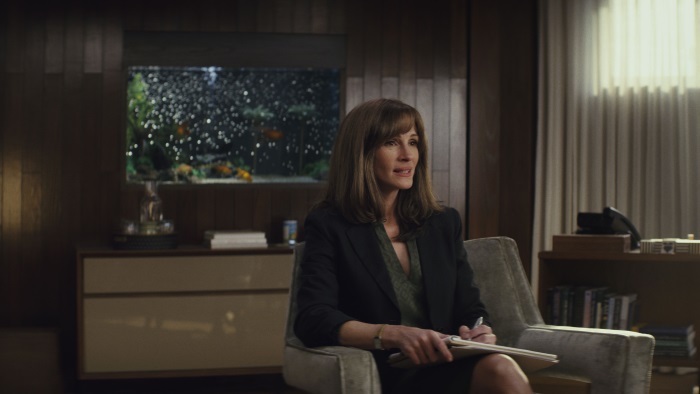
Esmail says he wanted to skirt one particular trope in adapting Homecoming to a visual medium. I did not want to make it ‘cinematic,’” he says. There’s a tendency when you adapt something for the big screen – whether from a book or a podcast – that it has to be ‘bigger.’ I wanted it to stay as intimate and small as it was in the podcast because that was the heart of the whole thing.” Horowitz says they had an acute question to answer in order to stay faithful to podcast’s structure and tone: How do you execute long scenes that are very heavy on dialogue and very light on action? We had to figure out how to make those scenes visually interesting,” says Horowitz. Turn their length into a strength and build a dynamic visual style, which is obviously something Sam excels at.”
The team agreed that the narrative begged for a mix of off-kilter images” within a sort of muted nothing-to-see-here” tone, one in which people are having very mundane conversations amid bizarre situations. The optics of Homecoming – like its aural elements – are deceivingly complex. The inspirations are Alfred Hitchcock and Brian DePalma— a throwback to character-based thrillers,” says Esmail. It’s Baroque and Pastiche without actually throwing it back into the past.” He says the series simmers in visual language; it lets its moments linger, thereby allowing suspense to build and ratchet-up with one-take” shots. Crucial to achieving these throwback” visuals was Mr. Robot cinematographer Tod Campbell, also a veteran of Showtime’s The Affair and Netflix’s Stranger Things.
Adding to the novelty of the production was the fact that Homecoming was the first project to shoot on Universal Studios’ newly-minted production facilities near Los Angeles. Designed for added shooting flexibility, two stages were joined into one 36,110 sq. ft. production space whose 51 ft. grid height allowed for the series’ extensive two-story set. In addition, two four-story production office buildings with 30,000 sq. ft. of dressing rooms, green rooms and office space adjoin the stages. I wanted Heidi’s office to be built in a specific way—it’s sort of an octagon—so I could shoot from any angle, do overheads shots, style the framing,” says Esmail. That drove the shape of the set and the fact that 70 percent of the show was going be at this location. We needed the utmost control.” Email continues: I met my production designer, Anastasia Stasia” White way back on the pilot of Mr. Robot when she was an art director. What you need in a production designer is somebody like her who gets the tone and vibe of whatever you’re shooting, and has great taste.” He says White never stops thinking, never stops coming up with ideas.” She also never stops subverting them, and she’s not afraid to go a little surreal,” says Esmail. I think the picture in everyone’s head when they’re listening to the podcast was a clinical institutional, almost like an insane asylum. But Eli and Micah felt that it should actually be the opposite, as if it’s a friendly environment. A building that’s been converted into this sort of ‘hip, cool place’ where these soldiers are rehabilitated. But it’s just slightly off in their attempts at being hip and cool. And Stasia killed it.”
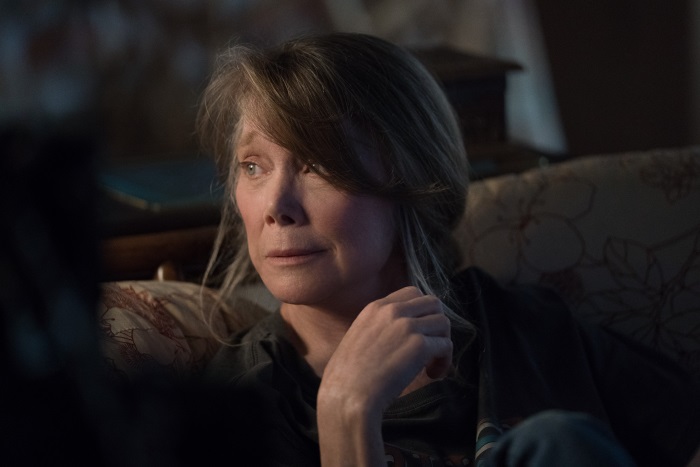
One example of White’s nuanced approached to production design can be seen in the 2018-set scenes that take place at the Homecoming facility. During that time, all of the facility’s exit” signs are bathed in green light. In the 2022-set scenes, toward the second half of the season, they are red. It’s rare to find a production designer who wants to show off those little flourishes and subtleties in ways that disobey reality and groundedness,” says Email. We knew that at the center of this story was Heidi and Walter’s relationship, and then Heidi and Colin coming into conflict,” says Bloomberg. In a podcast, it’s difficult to have more than two people talking at the same time. You can’t see them, so they kind of need to say where they are. For TV, we were able to explore smaller characters and different worlds, like Walter’s mother Gloria, and Craig, the life-skills coach at Homecoming. We were excited to communicate these things to Stasia and ask: What does this world look and feel like?”
Horowitz says he and Bloomberg were amused by the idea that whoever built Homecoming’s fictional structure, he or she was charged to make it fun and lively.” What was their inspiration?” says Horowitz. They probably had a mood board and thought, ‘Oh, it’s Florida so we’ll do a retro-seaside theme, it’ll have a great contrast to all these dark colors and heavy wood.’ Stasia took that approach times 100 and then added pineapples — everywhere.” The pineapple is something that one of the veteran characters, Shrier, played by Jeremy Allen White, fixates on in episode two,” says Bloomberg. He sees it as one type of lie and deception. But there’s another kind of deception hidden underneath. In a weird way, the pineapple comes to represent the layers we’re talking about. And it’s a completely innocuous, friendly object.” More broadly, says Horowitz, the ubiquitous pineapple is one way the production design creates a juxtaposition between the surreal and mundane.I feel like that’s a pretty common part of our experience, just as human beings in this social and political climate – seeing these obvious absurdities treated as normal reality.”
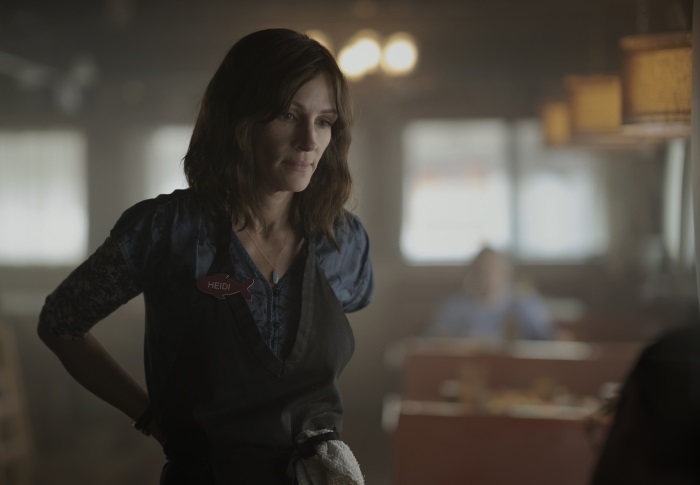
One crucial element to selling Homecoming on the screen was its singular approach to sound design. Sound is as important – sometimes more so – than visuals,” says Esmail. One thing I pitched early on was keeping some of the voyeuristic elements. So even though we’re not actually taping the phone conversations, the sound design is still going to be ‘futzed.’ Traditionally in movies and TV shows, you hear each person on a phone call just fine. Here, we kept the tone where everything’s futzed; a little off and a little strange. That’s what re-creates the voyeuristic feeling that you had when you listened to the podcast.” It’s also impossible to ignore one of the series’ most powerful sound-design elements: the fish tank in Heidi’s office. In the podcast, we wanted each location to have a certain kind of audio fingerprint,” says Horowitz. For Heidi’s office, we wondered: What can give it that sound? A white-noise machine? But that didn’t really sound like anything. So we wrote in the fish tank, just to have a little bubble sound — but then it grew into a whole plot element, and now it’s even an important visual piece too.” Fans of the podcast will recall another pronounced aural cue, which returns in the TV series. These people can’t just talk on and on, so we wanted some sort of outside vector, some force to shake it up, so that became a bird call,” says Horowitz of the avian noise that Heidi and Walter hear during their first sessions. It’s a limpkin in the podcast, but apparently limpkins cannot be taken out of the wetlands for various legal reasons, so in the series, it’s a pelican named Peggy.”
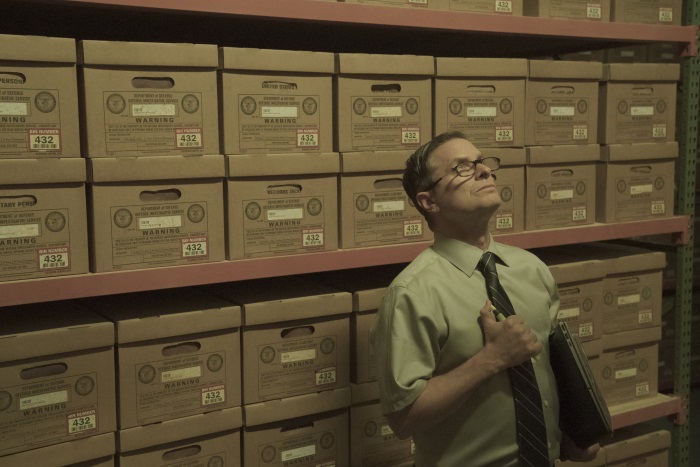
Julia Roberts on Her First-Ever Starring Role in TV For Homecoming’s lead, signing onto the project – despite it being her first ever lead role in a series – was a relatively easy yes.” I was really taken with the podcast,” says Oscar-winning actress Roberts. The characters were terrific. [Actress] Catherine Keener is a friend of mine— she played Heidi in the podcast— and she was fantastic. I was listening to it with [a TV series] in mind. The audio, the sound production, the fish-tank bubbles… it was all so visual. Micah and Eli know this material inside and out.” Esmail’s track record of executing complex, visually-stunning material for the small screen allayed any reservations Roberts may have had about transitioning from film to TV. He’s is an incredible intellect and has such a very specific vision,” says Roberts. I come from film where there’s just one captain throughout. And I know from friends and family who work in television that there’s a changing-of-the-guard in every episode, which I’m unaccustomed to.” Homecoming was just so surgical” in its complexity, says Roberts: the different time periods, all the different characters – they required a need for one voice behind it the whole time. I said from the beginning that I really wanted one person to direct all the episodes. And if that person wasn’t Sam, then I probably wouldn’t do it.” Roberts echoes her collaborators’ enthusiasm about Homecoming’s nimble set design. They built it so that we could do these incredible camera maneuvers,” she says. I think there are days when we’ve done 11 pages of dialogue in one camera move up and down hallways, down stairs, through huge conference rooms and cafeterias— it’s pretty amazing,” she says. It’s been pretty challenging. The show could be renamed, No Easy Days, because there were none! But my collaboration with Sam has been so joyful. We’re just two peas in a pod. He’s very specific and clear in his direction. It’s been relatively effortless.”
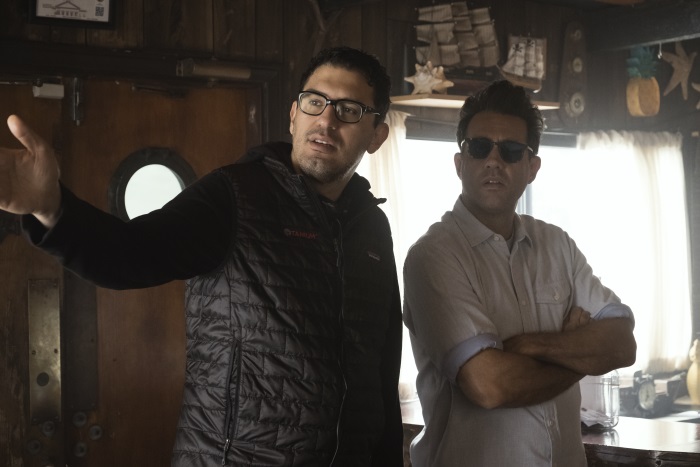
Bobby Cannavale, a stalwart of indie cinema (The Station Agent, Blue Jasmine) and an Emmy winner for HBO’s Boardwalk Empire, reflects on his turn in Homecoming – as Heidi’s boss Colin – and the series’ important overarching themes. The subject matter of returning war veterans is very timely,” says Cannavale. We’re also in the midst of a time in America in which we don’t really know what’s going on. There is a fomenting of an atmosphere of suspicion. What is America’s role right now? The idea of the Homecoming initiative – that it’s possible that could re-deploy veterans after we’ve erased their memories – isn’t that outlandish an idea. I wanted to play somebody like Colin who’s gung-ho about this an initiative because really there’s no such thing as a ‘bad guy’ when he’s someone who really believes in this idea.” Like Roberts, Cannavale says the series’ lynchpin was Esmail, with whom he first collaborated on season three of Mr. Robot. But his fandom started before the two met. I became a fan of Sam when Mr. Robot first premiered,” he says. He really is a master at creating an atmosphere of suspicion that asks: What exactly is memory? How do we know what a ‘real’ memory is? While I was listening to the podcast, I was actually shooting Mr. Robot. I came in after the weekend and asked, ‘Anybody listen to this podcast? Anybody?’ I asked Sam, who said he already had the deal in place to make the series. I thought, ‘Well, that’s a perfect marriage!’ Cannavale says he was particularly taken with Esmail, White and Campbell’s bag of production tricks. First of all, the set is massive. It’s the largest indoor space I’ve ever worked on,” he says. All the stuff that happens before Heidi intakes the drugs happens in a wide screen: 6:9 aspect ratio, bright colors. And then when we’re in the future, when she doesn’t remember, everything is shrunken down to this square aspect ratio; the colors are darker, there’s a fogginess and a limited scope. It’s such a great way of translating the theme of memory loss to the screen.”
Episodes :
101 – Mandatory” by Micah Bloomberg and Eli Horowitz
102 – Pineapple” by Eli Horowitz
103 – Optics” by David Weiner
104 – Redwood” by Micah Bloomberg
105 – Helping” by Cami Delavigne
106 – Toys” by Shannon Houston
107 – Test” by Eric Simonson
108 – Protocol” by Eli Horowitz
109 – Work” by Micah Bloomberg
110 – Stop” by Micah Bloomberg and Eli Horowitz
*All are directed by Sam Esmail
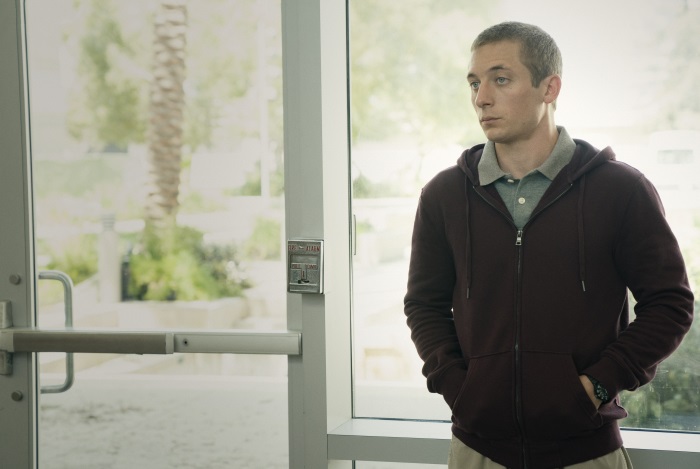
Synopsis :
Homecoming follows Heidi Bergman a caseworker at Homecoming, a Geist Group facility helping soldiers transition to civilian life. Years later she has started a new life, living with her mother and working as a waitress, when a Department of Defense auditor questions why she left the Homecoming facility. Heidi quickly realizes that there’s a whole other story behind the story she’s been telling herself.
Homecoming (season 1, 10 episodes)
Created by Eli Horowitz, Micah Bloomberg
Based on Homecoming by Eli Horowitz & Micah Bloomberg
Directed by Sam Esmail
Starring Julia Roberts, Bobby Cannavale, Stephan James, Shea Whigham, Alex Karpovsky, Sissy Spacek
Executive producers : Micah Bloomberg, Eli Horowitz, Sam Esmail, Chad Hamilton, Julia Roberts, Alex Blumberg, Matt Lieber, Chris Gilibert
Producers : John G. Lenic
Cinematography : Tod Campbell
Editors : Roseanne Tan, Justin Krohn, Franklin Peterson, Chris Guiral, Zachary Dehm
Production companies : Esmail Corp; Gimlet Pictures; Crocodile; We Here At; Red Om Films; Anonymous Content
Universal Cable Productions; Amazon Studios
Original network : Amazon Video
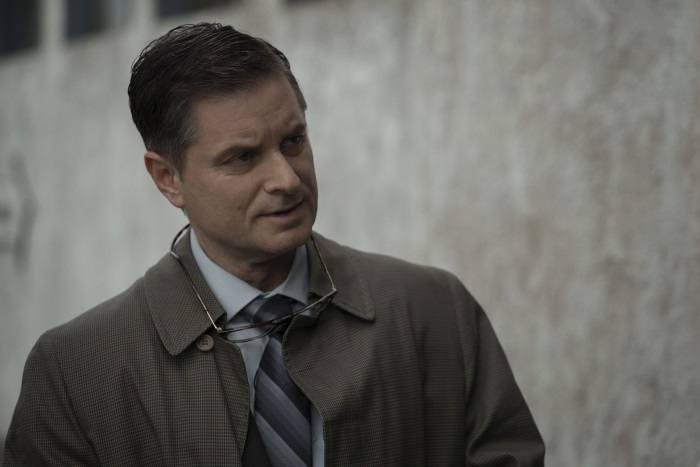
(Source: press release)

